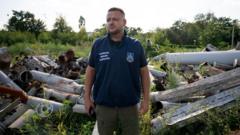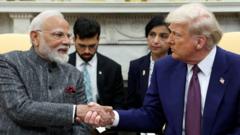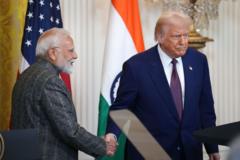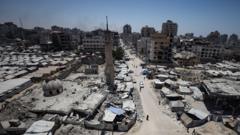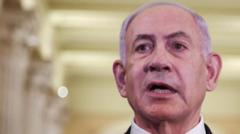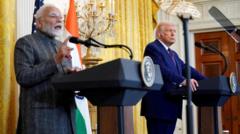Since Donald Trump's return to the presidency, the number of drones and missiles launched by Russia at Ukraine has more than doubled, reaching unprecedented levels in the conflict. The uptick has prompted scrutiny of Trump's strategy towards Russia and its implications for Ukraine's security.
Surge in Russian Attacks on Ukraine Coincides with Trump’s Presidency

Surge in Russian Attacks on Ukraine Coincides with Trump’s Presidency
A BBC Verify analysis reveals a dramatic increase in Russian aerial assaults on Ukraine since Donald Trump resumed office, despite his calls for a ceasefire.
Russian aerial offensives against Ukraine have dramatically escalated since Donald Trump took office again in January, according to an analysis by BBC Verify. The report indicates that the number of drones and missiles launched by Russia has more than doubled compared to previous months during President Joe Biden's administration, raising alarms about the implications for the ongoing war.
Prior to Trump’s re-election, aerial attacks had already begun to rise during Biden’s term, but they intensified sharply following Trump’s win in November 2024. Despite Trump’s assertion during his campaign that he could end the war quickly by engaging with a "respected" president in the Kremlin, the surge in attacks challenges the efficacy of his proposed tactics. During his tenure, Trump has, on two occasions, temporarily halted military aid to Ukraine, a move criticized by many who contend it may have emboldened Russia.
The data compiled by BBC Verify shows that from January 20 to July 19, more than 27,000 munitions were launched by Russia, compared to just over 11,600 in Biden’s last six months. The White House has responded to criticism by highlighting Trump’s commitment to supplying NATO allies with arms and threatening sanctions against Russia, yet attacks spiked again after early diplomatic efforts failed to yield results.
These military escalations have resulted in significant civilian casualties and have left Ukraine increasingly vulnerable as Russian production capabilities for drones and missiles surge. Ukrainian military intelligence estimates that Russia’s production of ballistic missiles has escalated by 66% over the past year, with reports of newfound capability to manufacture a substantial number of drones daily.
Senator Chris Coons, a prominent Democratic figure, asserts that Trump's strategic decisions regarding military assistance may have encouraged Russian aggression. The increasing magnitude of these assaults is renewing demands for the United States to bolster Ukraine's air defenses, notably through the provision of advanced Patriot missile systems, which are among the most effective against aerial threats.
Experts point to Russia's ramped-up drone and missile production as a significant factor in its ongoing attacks, raising concerns about Ukrainian defense capability. The situation remains dire for many Ukrainians facing constant threats of bombardment, generating anxiety and fatigue among the population.
As the conflict drags on, the necessity for a consistent and robust U.S. policy becomes increasingly urgent, underlining the centrality of sustaining security assistance to Ukraine, with both analysts and local voices stressing the importance of solidarity and support in overcoming adversity. The situation, fraught with uncertainty, compels a thorough examination of international strategies as the conflict enters a potentially more perilous phase.

